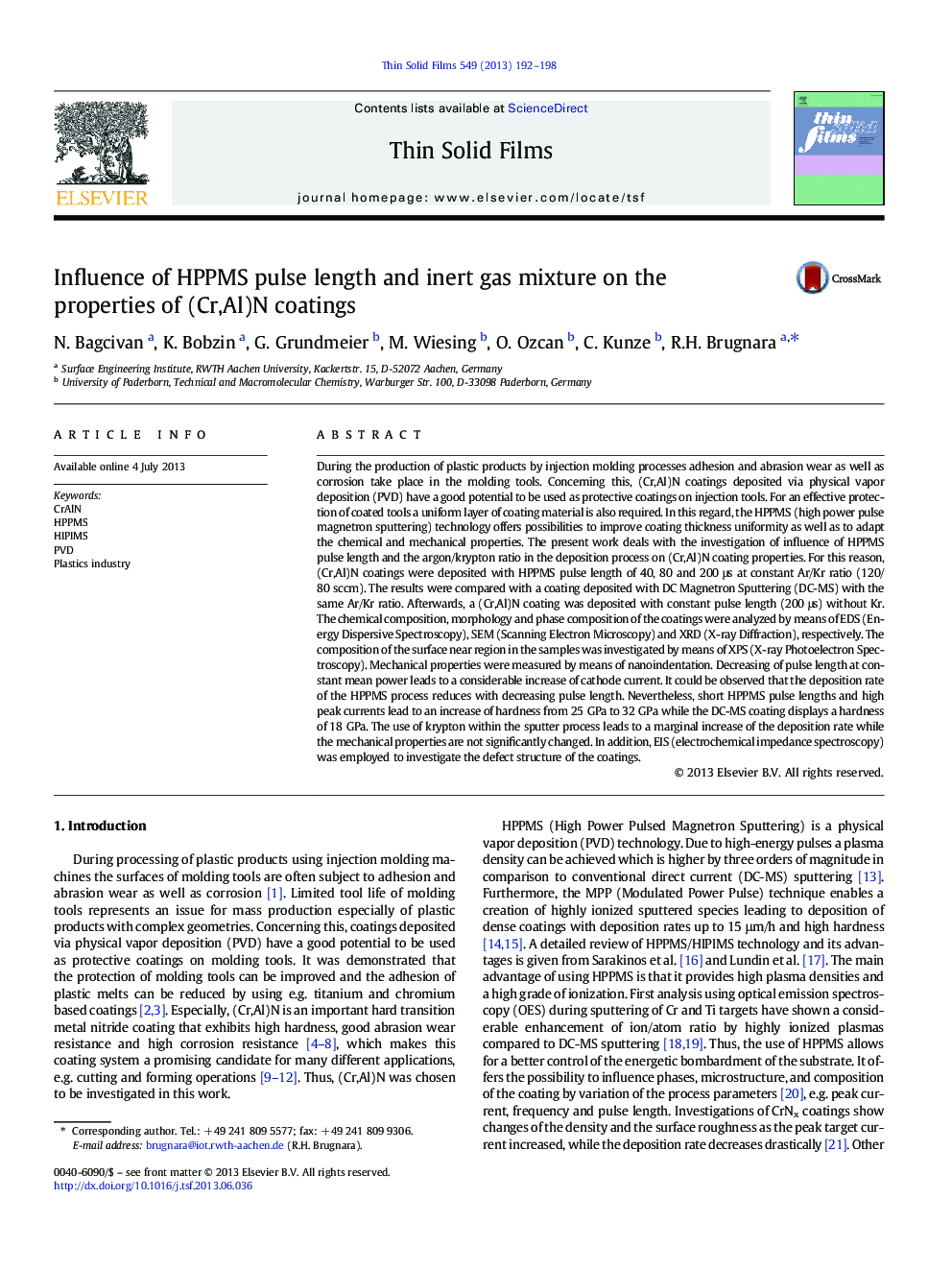| کد مقاله | کد نشریه | سال انتشار | مقاله انگلیسی | نسخه تمام متن |
|---|---|---|---|---|
| 1665750 | 1518055 | 2013 | 7 صفحه PDF | دانلود رایگان |

• Short HPPMS pulse and high peak current lead to a fine grained (Cr,Al)N morphology.
• The (Cr,Al)N deposited with short pulse is less sensitive to surface oxidation.
• The (Cr,Al)N deposited with short pulse showed high hardness up to 32 GPa.
• By using a Ar/Kr mixture an increase of the deposition rate was achieved.
• EIS analysis indicated a defect rich structure in the DC compared to HPPMS coating.
During the production of plastic products by injection molding processes adhesion and abrasion wear as well as corrosion take place in the molding tools. Concerning this, (Cr,Al)N coatings deposited via physical vapor deposition (PVD) have a good potential to be used as protective coatings on injection tools. For an effective protection of coated tools a uniform layer of coating material is also required. In this regard, the HPPMS (high power pulse magnetron sputtering) technology offers possibilities to improve coating thickness uniformity as well as to adapt the chemical and mechanical properties. The present work deals with the investigation of influence of HPPMS pulse length and the argon/krypton ratio in the deposition process on (Cr,Al)N coating properties. For this reason, (Cr,Al)N coatings were deposited with HPPMS pulse length of 40, 80 and 200 μs at constant Ar/Kr ratio (120/80 sccm). The results were compared with a coating deposited with DC Magnetron Sputtering (DC-MS) with the same Ar/Kr ratio. Afterwards, a (Cr,Al)N coating was deposited with constant pulse length (200 μs) without Kr. The chemical composition, morphology and phase composition of the coatings were analyzed by means of EDS (Energy Dispersive Spectroscopy), SEM (Scanning Electron Microscopy) and XRD (X-ray Diffraction), respectively. The composition of the surface near region in the samples was investigated by means of XPS (X-ray Photoelectron Spectroscopy). Mechanical properties were measured by means of nanoindentation. Decreasing of pulse length at constant mean power leads to a considerable increase of cathode current. It could be observed that the deposition rate of the HPPMS process reduces with decreasing pulse length. Nevertheless, short HPPMS pulse lengths and high peak currents lead to an increase of hardness from 25 GPa to 32 GPa while the DC-MS coating displays a hardness of 18 GPa. The use of krypton within the sputter process leads to a marginal increase of the deposition rate while the mechanical properties are not significantly changed. In addition, EIS (electrochemical impedance spectroscopy) was employed to investigate the defect structure of the coatings.
Journal: Thin Solid Films - Volume 549, 31 December 2013, Pages 192–198